DS18’s end of year exhibition opened on 14th June at 18.00, as part of the annual University of Westminster OPEN Exhibition. The exhibition will be open 15 June – 09 July, from 10.00 – 21.00. Further details are on the flyer below.
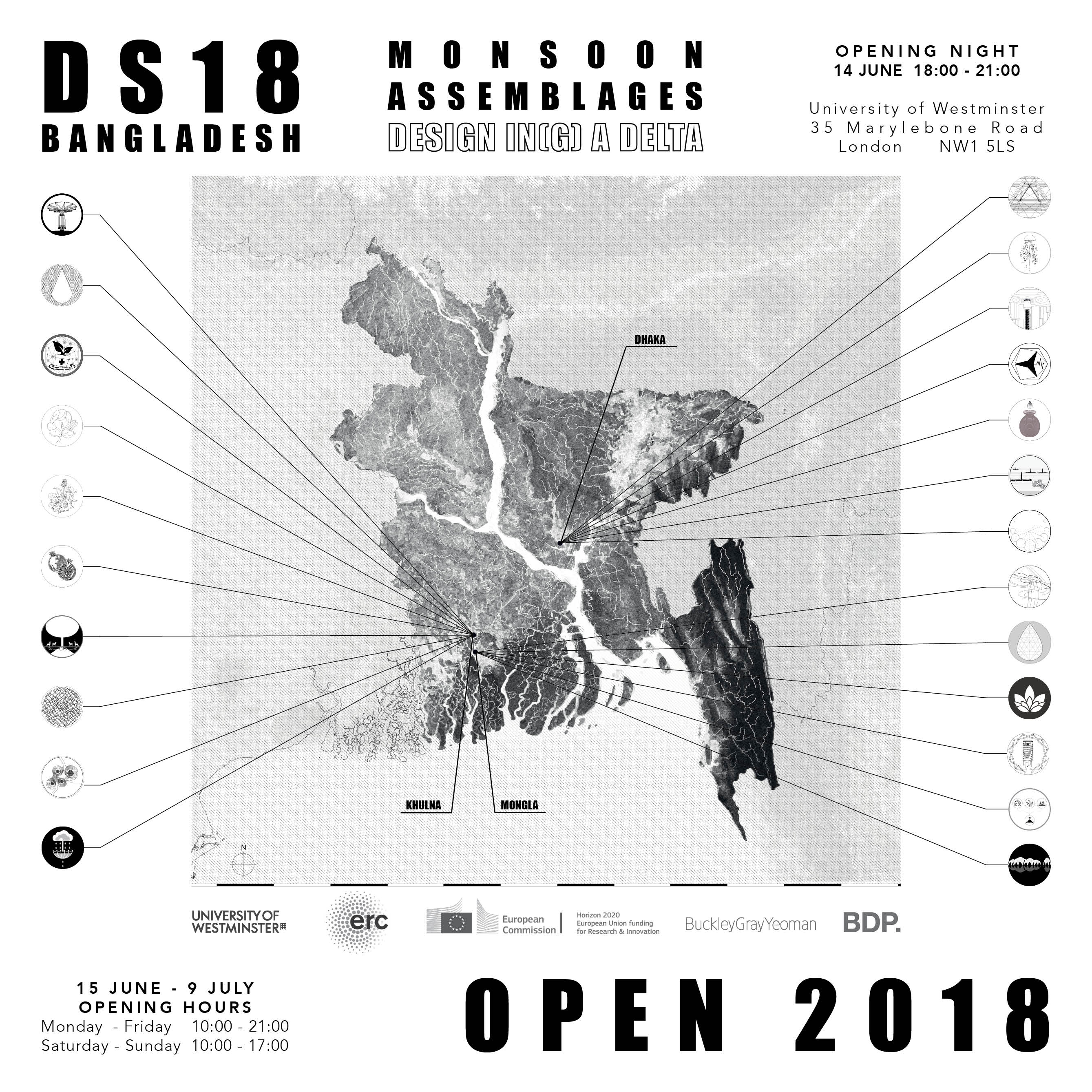
Monsoon [+other] Waters, the second Monsoon Assemblages symposium in a series of three was convened by the Monsoon Assemblages project at the University of Westminster on the 12th and 13th of April 2018.
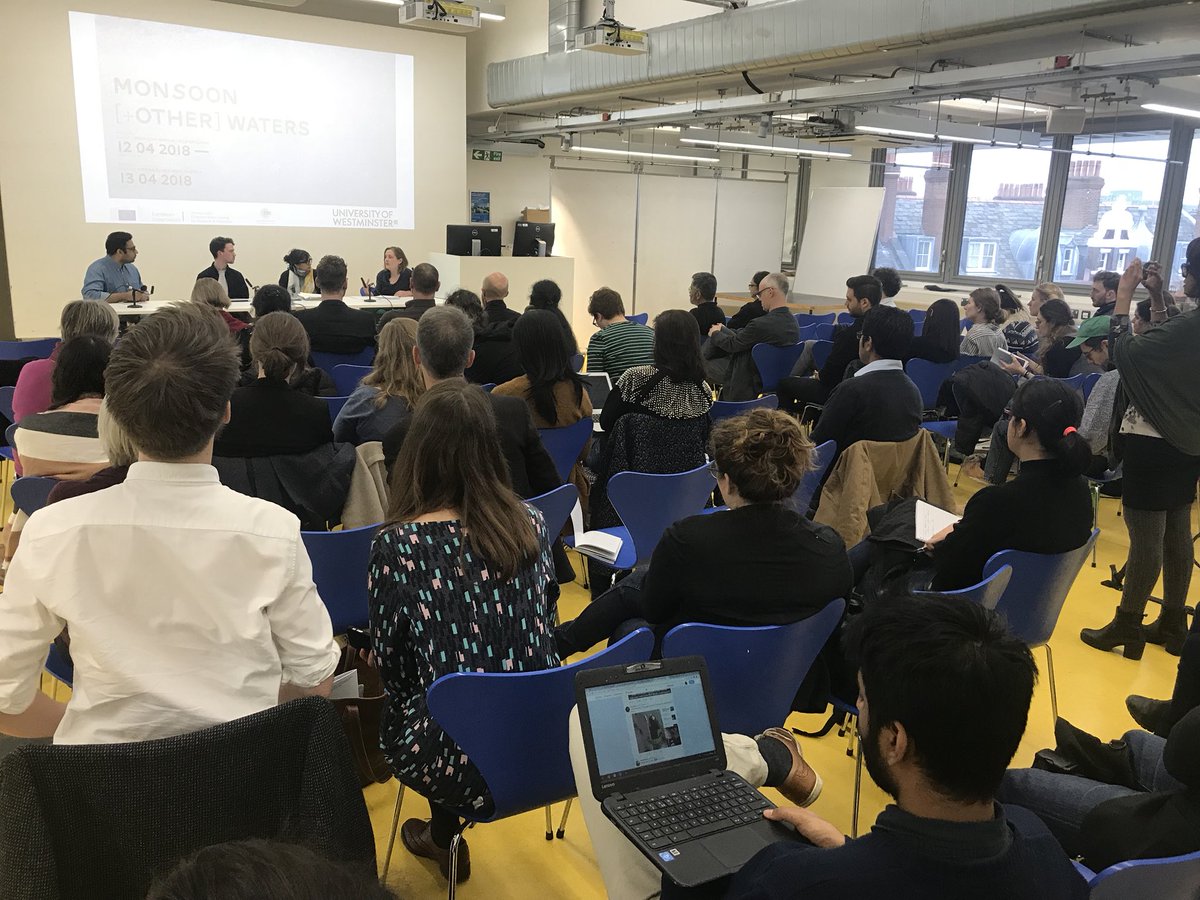
Photograph: Lindsay Bremner.
This year’s symposium comprised a number of inter-disciplinary panels, key-note addresses and an exhibition. It brought together established and young scholars and practitioners from a range of disciplines, knowledge systems and practices to engage in conversations about the ontologies, epistemologies, histories, politics, practices and spatialities of waters, monsoonal and beyond.
The symposium was introduced by Harry Charrington, Head of the Department of Architecture at Westminster University. It began with an interdisciplinary panel featuring PhD Candidate Ifor Duncan and anthropologists, Pamila Gupta and Jesse Ransley. Ifor Duncan opened the session by following the traces of human violence in the riverine spaces of the Amazon; Jesse Ransley discussed village life in the backwaters of Kerala and Pamila Gupta expanded sensorial notions of monsoon wetness through the practice of capturing its fragrance in a bottle. After coffee another interdisciplinary panel comprising anthropologist Megnaa Mehtta, geographer Pushpa Arabindoo and artist Laura Denning introduced us to the politics of embankment in the Sundarbans and of hydropolitics in Chennai, while Laura Denning screened a short film on the changing landscape of the Somerset levels and the Avalon Marshes in the UK.
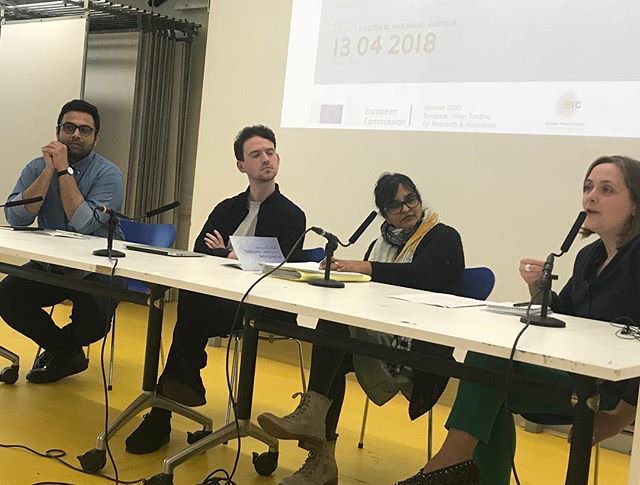
Harshavardhan Bhat (Chair), Ifor Duncan, Pamila Gupta, Jesse Ransley. Photograph: Lindsay Bremner.
This was followed by an inspiring keynote lecture by landscape architects Dilip Da Cunha and Anuradha Mathur titled ‘Oceans of Rain,’ which challenged the idea of India as a land of rivers and replaced it with the idea of ‘oceans of rain’ and explored wetness as a way of understanding the world. The lecture was accompanied by da Cunha and Mathur’s drawings, which challenge cartographic and political representations of the world that delineate ocean from land.
Day two of the symposium began with a panel on water-as-risk in Mumbai (Theresa Zimmerman), Chennai (Laura Verdelli) and the Ramanathapuram district of Tamil Nadu (Avantika Bhaskar). This was followed by the second keynote address of the symposium by anthropologist Kirsten Hastrup, who took us to Arctic North-West Greenland, to help us think through the interface between natural and social histories with an account of long-term fieldwork undertaken during and after her ERC-funded Waterworlds project. She emphasised how precarity, turbulence, and indeterminacy, are forces which, far from being anomalies disturbing an imagined constant of life, are what enables life, and lives, to happen.
This was followed by two panels, the first of which told stories of waters wrested into industrial and other forms of utility: Matthäus Rest discussed the Nepalese government’s hydroelectric programme, Anthony Acciavatti presented over a decade of fieldwork to uncover the material, social and industrial operations of the Ganga River and R.H. Rukkumany discussed hew work on the Tank systems of Tamil Nadu. The symposium closed with an immersion into the waters of man-made wave pools (David Whyte), saw sudden streams appear in a Sussex village (Mary Geary), and Monsoon Assemblages research fellow, Beth Cullen concluded with her work on the changing status of Chennai’s tanks.
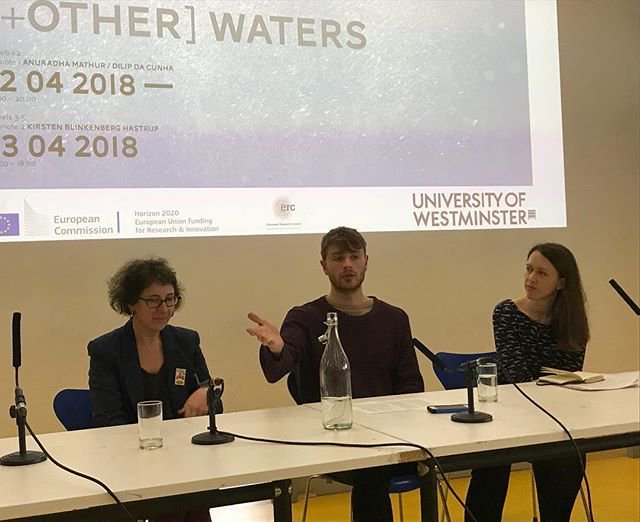
Mary Gearey, David Whyte and Beth Cullen. Photograph: Lindsay Bremner.
The drinks reception gave attendees a final chance to view the accompanying exhibition, which featured work contributed by speakers, as well as current and former students of DS18 at the University of Westminster (Constantina Avraamides, Sarah Bass, Charlotte Birch, Georgia Trower, Laura Nica), and architects and designers from the UK, India, Bangladesh, and North America (Vrinda Seksaria + David Kendall, Saif Ul Haque and Nikole Bouchard).
Thank you for organising a wonderful informative event, I enjoyed taking part and look forward to the publication (David Kendall, Visiting Research Fellow | CUCR, Goldsmiths, University of London).
Great symposium and I regret even more now missing the first one (Pushpa Arabindoo, Senior Lecturer in Geography & Urban Design, Department of Geography, University College London).
I very much appreciated the invitation to share my work and the conversations I had with you and other members of the symposium. I hope we stay in touch as I think the work you are doing with Monsoon Assemblages is by far the best work I’ve seen on the subject—and much needed! (Anthony Acciavatti, Adjunct Professor, Columbia University in the City of New York).
Really a treat to have so many people in one place thinking about the monsoons as a starting point of discourse and research! (Anuradha Mathur Professor, Landscape Architecture Department, School of Design, University of Pennsylvania).
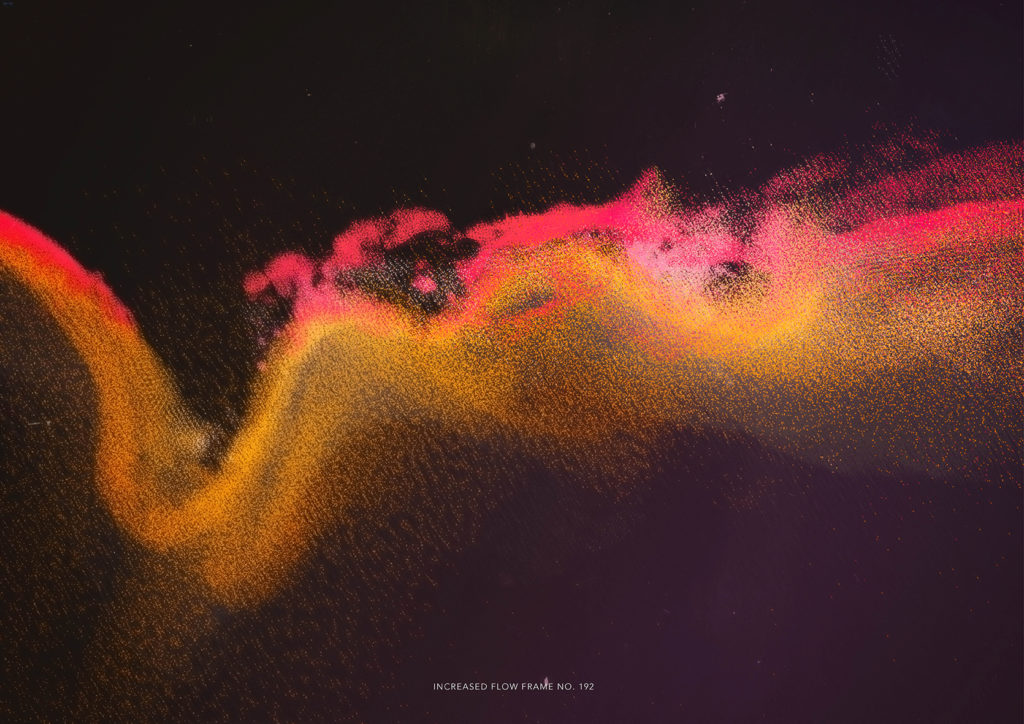
Image: Sarah Bass
The full symposium programme, including abstracts is available here.
Videos of other presentations are posted on the Monsoon Assemblages YouTube channel.
The organisers of the event will be producing an edited publication of the proceedings of Monsoon [+ other] Waters by the end of 2018.
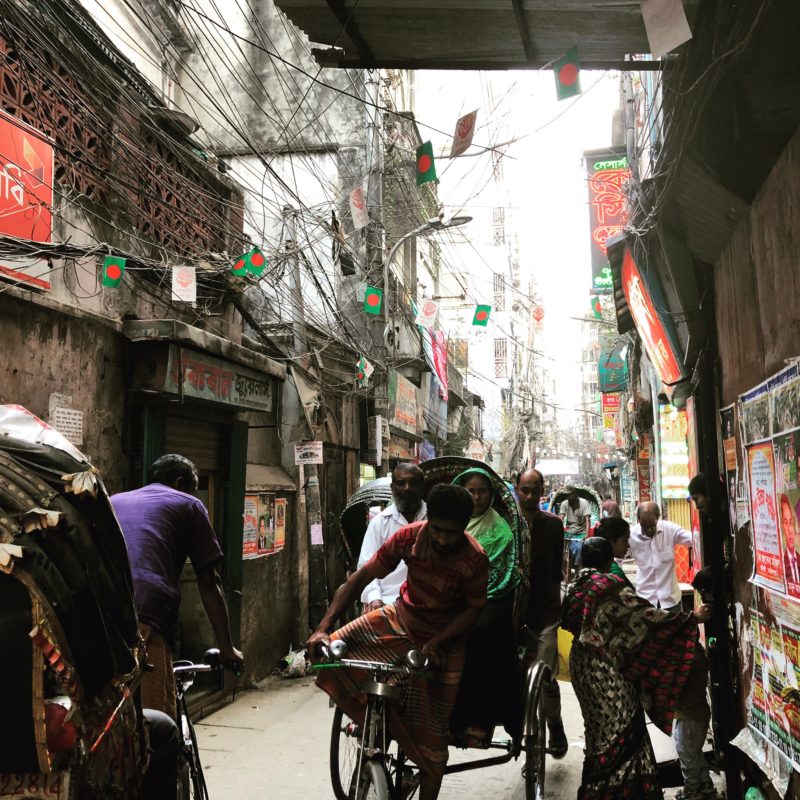
Old Dhaka. Photo by Christina Geros.
A body of brown, opaque dust hovered over the city. Easily carried by the cool, dry heat, our lungs labored heavy with particulate. Construction, relentlessly pounding; chimneys, relentlessly puffing–the business of reforming, refabricating and repackaging the earth fills the air and covers the landscape.
Pohela Falgun– the arrival of spring, warmth and light: through breaks in Dhaka’s endless traffic. Girls adorned with bright yellow flowers and saris weave their way through a sea of exhausted rickshaw drivers. A seasonal change between hot and hotter, but over the next few days its palpability undeniable–even to us.
A trip or two to the pharmacy later, we too carried the marks of this liminal period of the year…
In February, we (Christina Geros and Beth Cullen) traveled to Dhaka for a short, two-week trip to find grounding for our preliminary research within the city and its communities. Prior to our visit, we had been gathering and analyzing information about the city and its larger territory, from the Himalayas to the Bay of Bengal with the aim of finding the monsoon in Dhaka. As a city constructed of a fluvial plain, it would be easy to say, “the monsoon is everywhere”; but, our research had led us to believe that the monsoonal registers of Dhaka were uniquely situated in the material and immaterial spaces and practices of this city. Over the course of our stay, we identified three lines of inquiry for further investigation when we return to Bangladesh later in the year. Working from the heart of Old Dhaka to the dynamics of the larger territory, we will spend the next few blog posts briefly unpacking each of them.
Dholai Khal
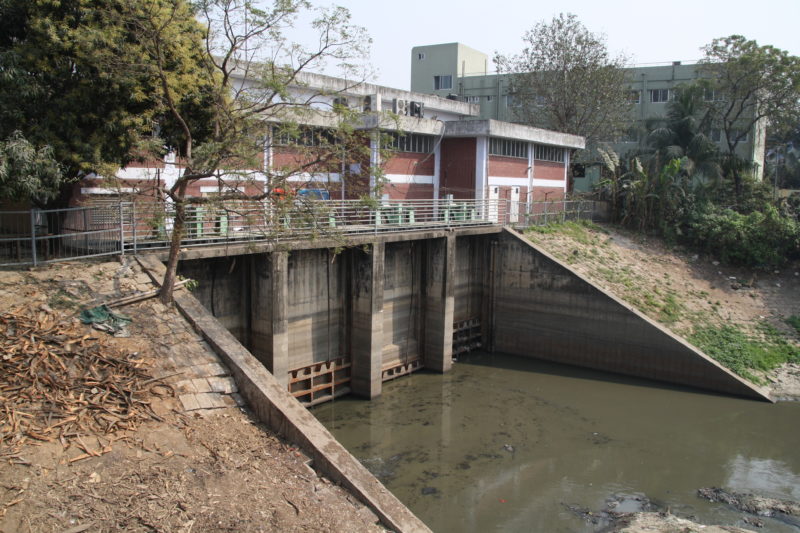
Dholai Khal switch gate at the entry of the Buriganga. Photo by Beth Cullen.
Our explorations started along the edge of the Buriganga River where we found what locals call the ‘switch gate’, marking the mouth of the old Dholai Khal canal. Until recently over 50 such canals, or ‘khals’, criss-crossed the city. The Dholai Khal, constructed in the early seventeenth century, was one of the most important. It provided protection and an essential transportation route along which boats could move into the city. According to residents, the status of the canal changed during the 1970s when the sluice gate and pumping station were constructed, severing the connection with the river.
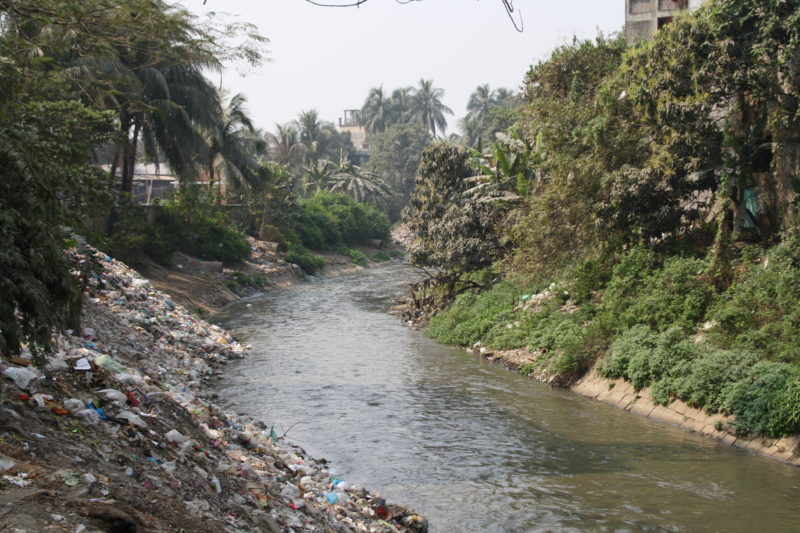
Tracing the Dholai Khal into the city. Photo by Beth Cullen.
We attempted to follow the canal from the sluice gate into Old Dhaka. A small open section remains, but it is substantially narrower than it was in the past. It now lies neglected, filled with rubbish. About 300 metres from the river the canal is replaced with concrete box culverts and disappears beneath a road. The filling in of canals for the construction of roads is partially responsible for the flooding that the city experiences during the monsoon season. Rivers, streams, khals and wetlands have been replaced by embankments, sluice gates, storm water drains and pumping stations. We managed to trace the route of the former canal along its replacement road to an old junction point. All that remains is an abandoned pond hidden from the street behind concrete walls.
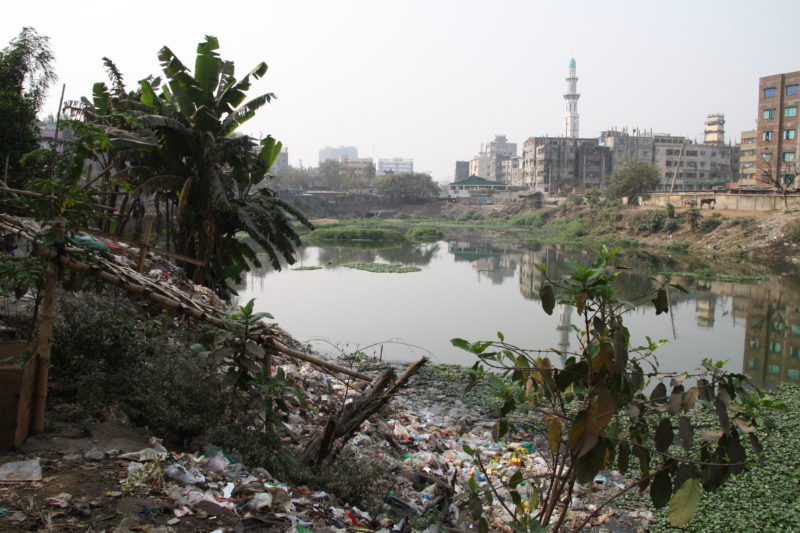
Small reservoir left behind at an old junction point of the Dholai Khal. Photo by Beth Cullen.
Buckland Bund
From the Dholai Khal we walked along the ‘Buckland Bund’, an embankment constructed in 1864 to protect Dhaka from river erosion and flooding. The bund was also intended to improve the workings of the Sadarghat, a bustling river port situated on the banks of the Buriganga River. The muddy, tidal foreshore of the river made the loading and unloading of cargo difficult. The ‘problem’ of the river was rectified by the creation of a raised and defined edge.

The Buckland Bund near the Dholai Khal entry into the Buriganga. View from the river; photo by Beth Cullen.
As one of the city’s first embankments, the Buckland Bund became a significant waterfront and a prime residential location for the wealthy. Over time Old Dhaka has been superseded by newer, upmarket neighbourhoods. The city has gradually turned its back on the river and although the Buriganga is still relied upon for the movement of goods and materials, it is no longer respected. As a convenient dumping ground for industrial waste, tannery effluent and sewage the river is considered to be biologically dead. People living along the edge of the Buriganga welcome the cleansing and flushing effects of the monsoon rains. Making our way along the bund we passed through the Sadarghat Market which supplies Dhaka with fresh fruit and vegetables. Produce arrives daily from different regions of Bangladesh. We watched traders unloading boats piled high with winter vegetables – potatoes, cauliflowers, cabbages, brinjal, radishes and pumpkins. Both the produce and the trade routes change with the seasons; the waterways expanding during the wet season and shrinking during the dry season, shifting with the rhythms of the monsoon.
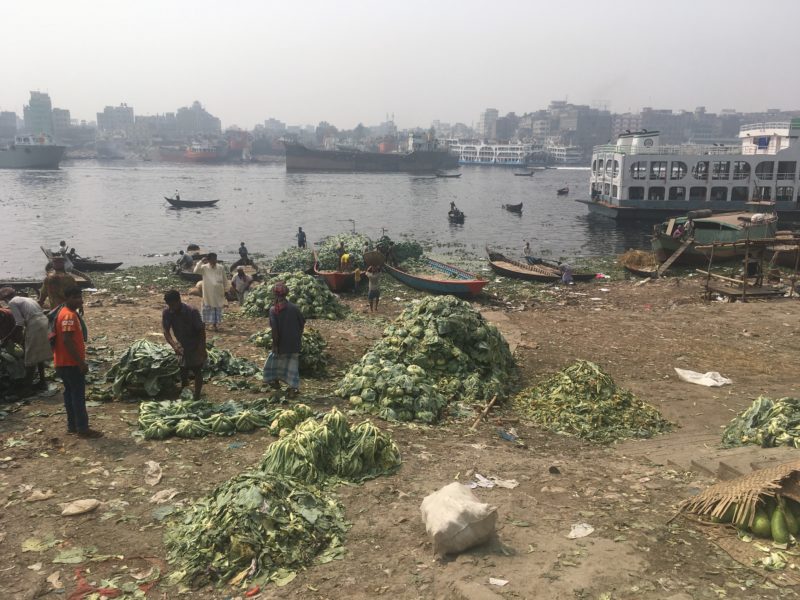
The Buckland Bund now operates as a landing and staging area for goods, particularly produce, arriving into the city. Photo taken at Sadarghat Market by Beth Cullen.
The history and tradition of canals in Old Dhaka certainly holds valuable knowledge of monsoonal living spaces. As we continued our explorations of the city, from its dense urban core to its sprawling edges, these knowledges and the spaces built by them remained in our forethoughts.
Dhaka, Part One: Discovery written by Beth Cullen and Christina Geros.
For more images and snippets from our trip, find us on Twitter and Instagram: @monass_2016
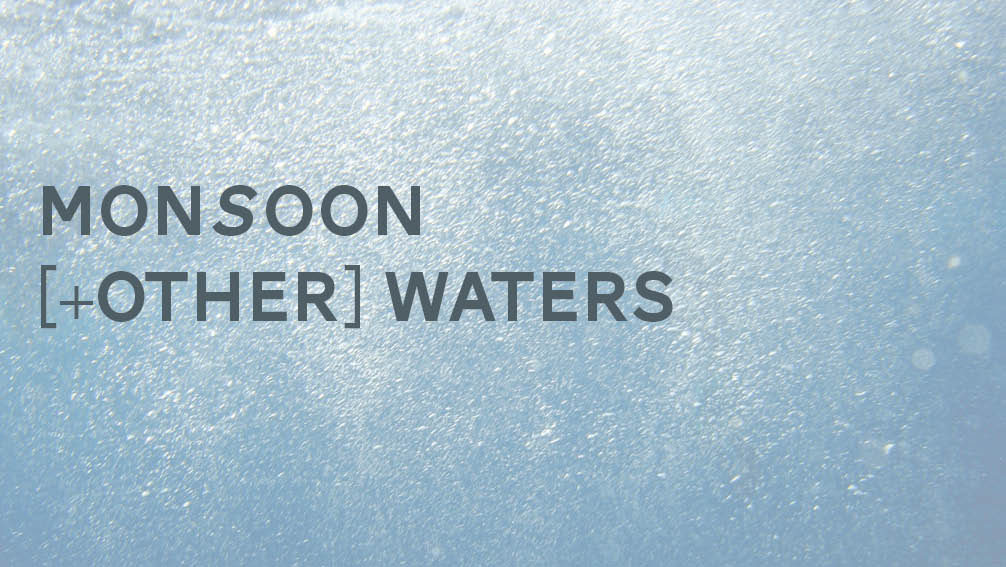
Monsoon [+Other] Waters is the second in a series of symposia convened by the Monsoon Assemblages project. It will comprise inter-disciplinary panels, key-note addresses and an exhibition. It will bring together established and young scholars and practitioners from a range of disciplines, knowledge systems and practices to engage in conversations about the ontologies, epistemologies, histories, politics, practices and spatialities of monsoon waters.
Confirmed key note speakers at the symposium are:
Anuradha Mathur and Dilip da Cunha: landscape architects based in Philadelphia, USA and Bangalore, India, whose work is focused on how water is conceptualised and visualised in ways that lead to conditions of its excess and scarcity, and the opportunities that its ubiquity offers for new visualizations of terrain and resilience through design.
Kirsten Blinkenberg Hastrup: environmental anthropologist based in Copenhagen, Denmark, whose work deals with social responses to climate change across the globe, currently centered in the Thule Area, NW Greenland.
14:00 | Registration
14:15 | Welcome: Harry Charrington
14:30 – 15:45 | Panel 1: Sub-merged Imaginaries
15:45 | Tea
16:15 – 17:30 | Panel 2: Liquid Matters
18.30 | Keynote 1: Anuradha Mathur, University of Pennsylvania + Dilip da Cunha, Columbia University
09.45 | Registration
10.00 | Welcome + Introduction: Lindsay Bremner
10.15 – 12:00 | Panel 3: Overflow + Risk
12.00 | Keynote 2: Kirsten Hastrup, University of Copenhagen, Denmark: Water Literacy: Challenges of Living with Troubled Waters
13.30 | Lunch
14:30 – 15:45 | Panel 4: Instrumentalising Material Waters
15:45| Tea
16.15 – 17:30 | Panel 5: Registers + interlocutors
17:30 | Closing remarks: Exhibition + Drinks
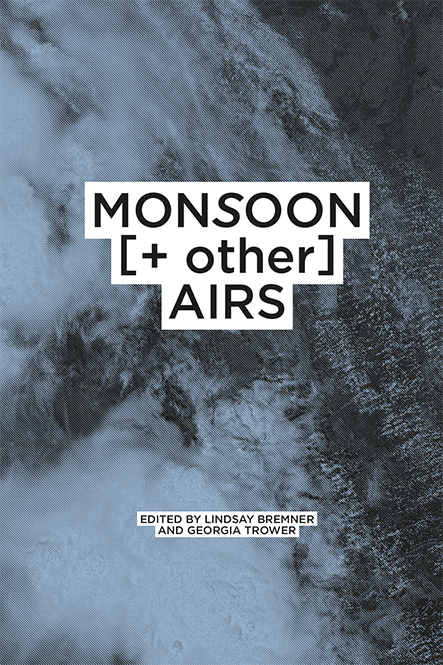
Monsoon Assemblages is pleased to announce the publication of its first symposium proceedings, Monsoon [+ other Airs], edited by Lindsay Bremner and Georgia Trower. It includes texts by Andrew Turner, Victoria Watson, Hanna Swee, Anasuya Basu, J. Pradeep John, Kali Stull and Etienne Turpin, Harshavardhan Bhat, Sean Lally, Keerthana Muralidharan and Simon Joss and graphic contributions by Cid Schuler, Tom Benson, Calvin Sin and Lindsay Bremner.
Monsoon [+ other Airs] is available as a downloadable PDF here: Monsoon [+other] Airs_Web_Final or a print to order book here or here.
While on a field trip to Bangladesh in November 2017, Lindsay Bremner and students of Design Studio 18 (DS18) from the University of Westminster visited the Architecture Discipline at the University of Khulna where they participated in an academic exchange seminar. They were welcomed and introduced to staff and students by Professor Anirban Mostafa, Head of the Architecture Discipline. DS18 students then briefly presented the mapping and simulation work they had done on Bangladesh, followed by Dr. Afroza Parvin’s presentation on ‘Water Resilient Urbanisation in a Tidally Active Delta: Issues, Challenges and Opportunities in Khulna.’ This was extremely informative and resonated with many of the issues the DS18 studio is addressing. Following this presentation, one of the students in the MSc Human Settlements at Khulna University gave an overview of their programme and the international studio in Bhutan currently underway. Shibu Bose, Assistant Professor at Khulna University then introduced us to the tour of Khulna that had been designed for us for the afternoon, and which followed the seminar.
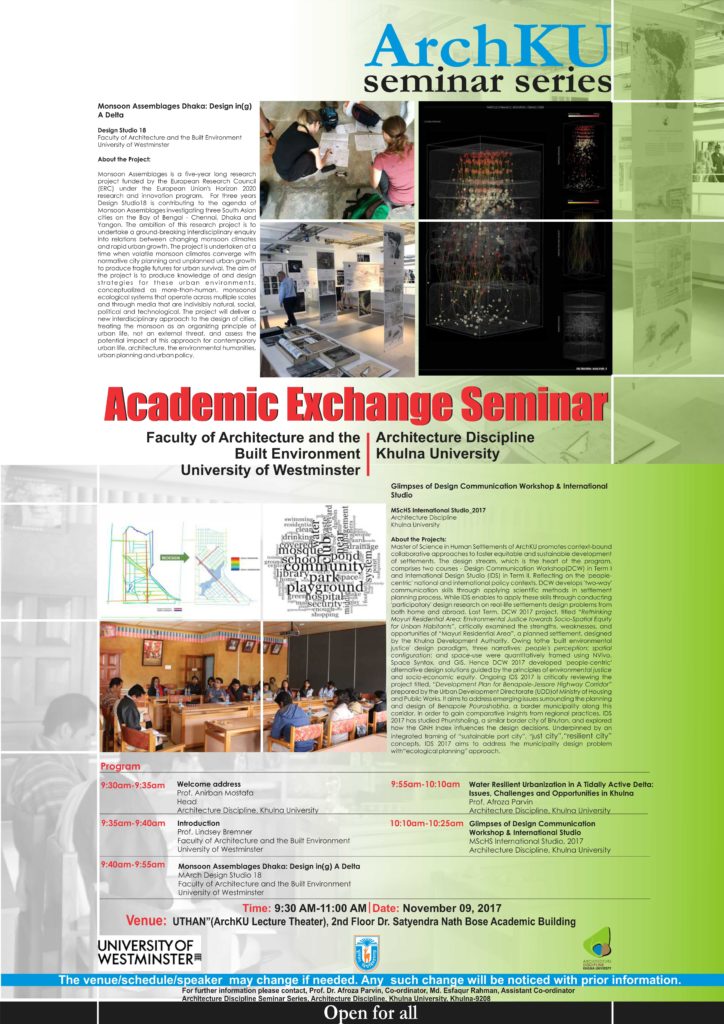
Thanks to the staff and students of Khulna University, in particular Dr. Afroza Parvin and Shibu Bose for the extremely warm welcome at the University and highly informative tour of Khulna.
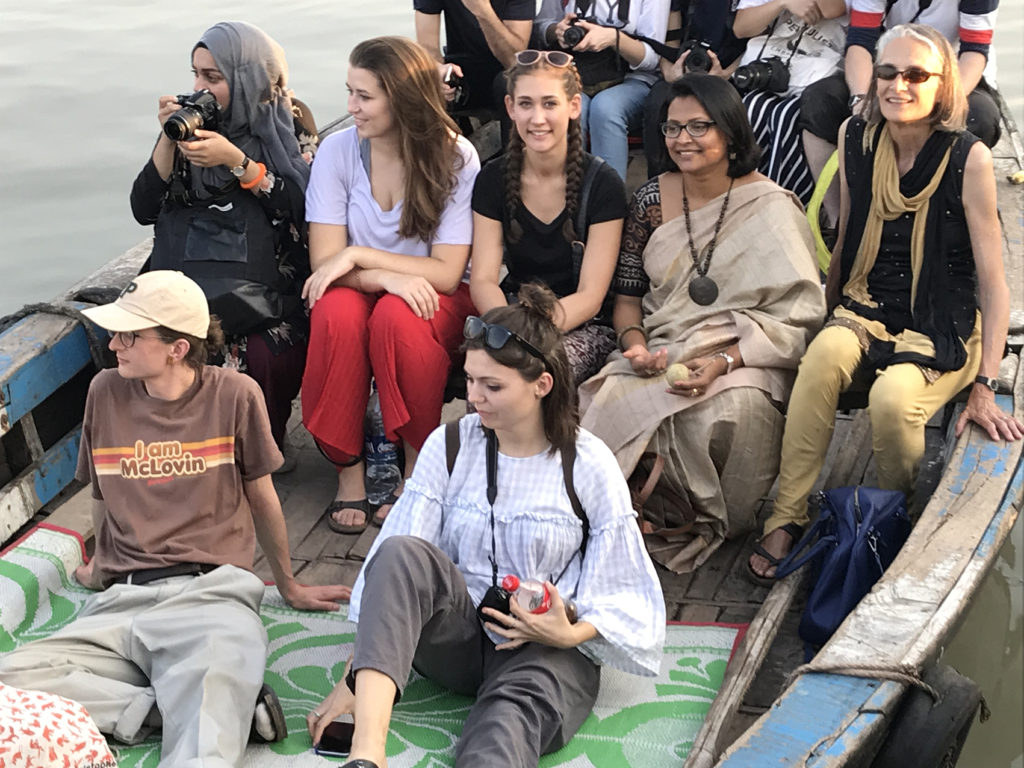
Tight fit, jam packed, jerky traffic, honking horns.
Stares, more stares, more and more stares.
Horizon … Horizon … Horizon
Tubes, pumping throbbing silt, intricate bamboo supports.
Never stopping, earth recycling, recycling everything.
Water. Stagnant, black, grey, green, moving, held, ponded, pulsing, rippling, still, as-far-as-the-eye-can-see, water hyacinth. Everywhere.
Incessant activity, hammering, making, breaking, remaking, loading, carrying, unloading.
Nibbling goats, amphibious children, darting, diving.
Islam, prayers, digital clocks.
Boats, flat bottomed, pointy, long, thin, wooden, fishing, ferry hulks..
Negotiating moving edges, up and down, back and forth.
Brown haze, horizon hanging, red sun ball setting, rising, setting.
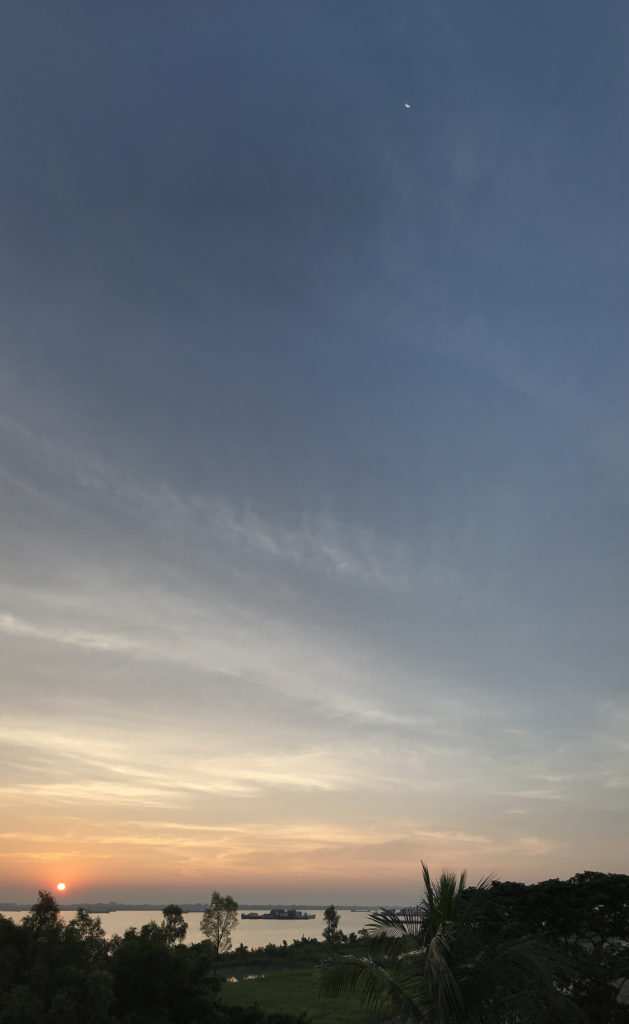
Lindsay Bremner, November 2017.
From the 1st to the 13th of August over the summer this year, I was part of the Planetary Futures Summer School in Montreal which was housed at the Milieux Institute for Arts, Culture and Technology at Concordia University and led by Orit Halpern, Pierre-Louis Patoine, Marie-Pier Boucher and Perig Pitrou. My attendance was partially sponsored by Concordia University (Summer School Fellowship) and the University of Westminster (Graduate School, Globally Engaged Research – Doctoral Scholarship Scheme). The school asked the question ‘How shall we inhabit the catastrophe?’.
The notes below titled Slowness is my report from my experience of the school.
There is a particular challenge in writing the abstract. There is an even more of a particular challenge in writing the specific. In between these two possibilities are often experiences of writing which rely on the frame of specificity to exist but operate because of loose material threads that somehow keep things together. The task of writing about the planetary futures summer school that took place earlier this August has been this effort of flux – an interesting inability of constant ground. Like the summer school itself. While the school took place in Montreal and situated itself in Quebec, the flux of the world in the fabrics of conversation, resisted that place. Extraction, Colonialism and Speculation as themes for the school were materially explored through sites and arguably local explorations – but our minds wandered, exchanged, walked, confused. We are tasked with the planetary which by definition was post-Montreal. Like the beautiful little coffee shop next to the Concordia University EV building that served exceptional bourbon coffee but refused public wifi installation.
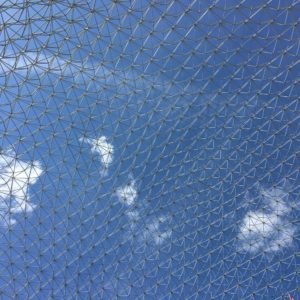
Figure 1: Montreal Biosphere
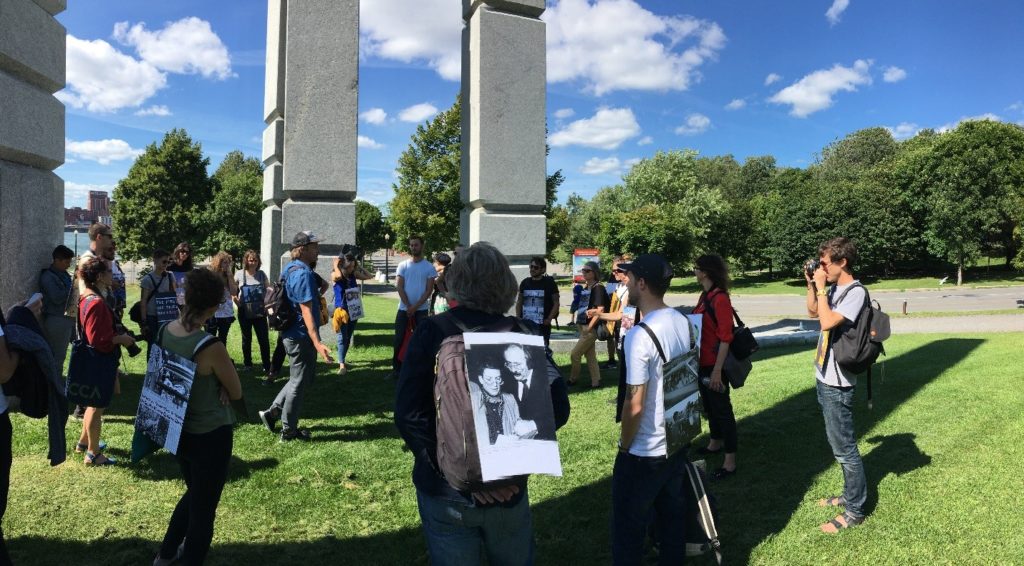
Figure 2: Speculative architectures workshop and interventions with Jean-Francois Prost, at Expo 67
On August 7th 2017, Tricia Toso and Marie-Eve Drouin-Gagne led a canal walk by the Saint Laurent Seaways discussing the colonial and industrial histories of the river ways. In an act of experimentation, to situate the body in space and time, Tricia suggested at a point, a collective slow walk. The group slowly, consciously, aware of one’s breathing, stepped on forward- one step at a time – processing thought and manually moving in slowness. How is our knowledge conscious with the world I thought? Passersby looked at the group, wondering if it was some kind of an art experiment. Perhaps there was art in production. Who could tell? Was it in the site or was it somewhere else?
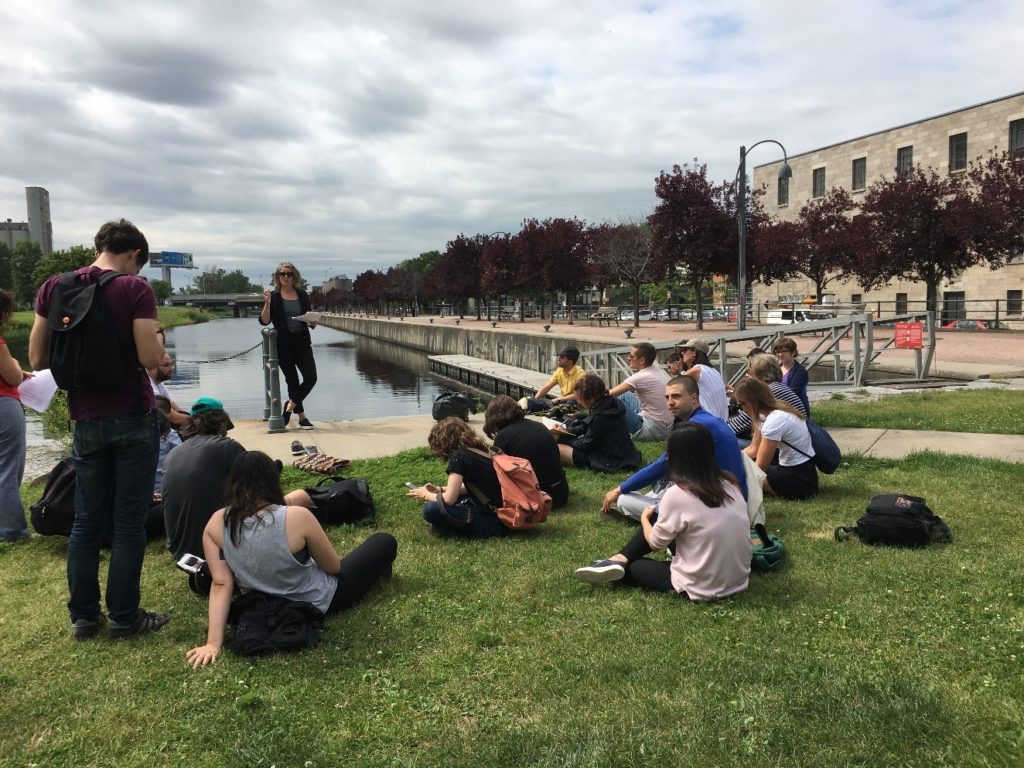
Figure 3: Tricia talking to the school about ‘decolonising infrastructure’
I felt that slowness on August 3rd too, as our yellow coloured school bus ascended upon the Malartic gold mine which is Canada’s largest. There was something eerie about the wind and the colour of space. From the top, we gazed at a scene which in its fantastical core, stood at ranks with the scores of images that supplied the visual mind with several science fiction earthly extractive worlds. We were here, walking on rocks. We were here, imagining as if we were somewhere else. From the tonnes of dark earth, a system of human technological history had deciphered that shiny gold oozed. The mine sells most of its gold to banks. The gold mine was here but the gold mine was everywhere too. Speculation we thought cast this labor of human and machine into broader webs of operation. We thought there were spatial borders, but were they really?
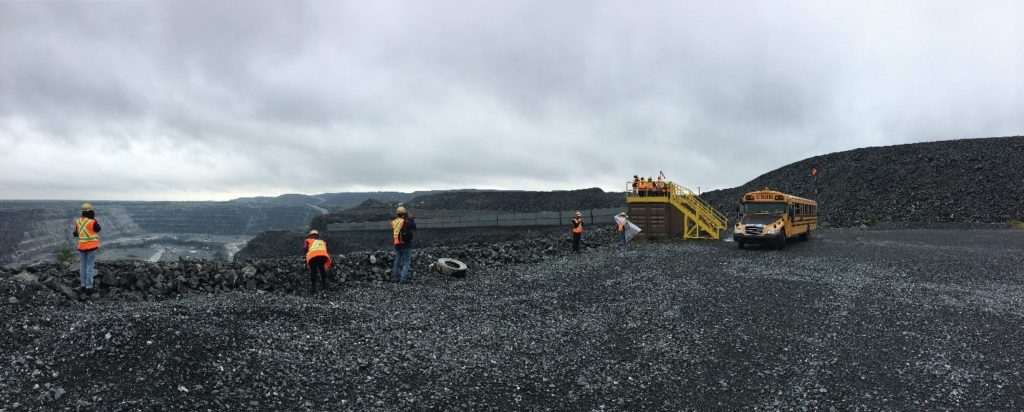
Figure 4: researchers documenting the mine
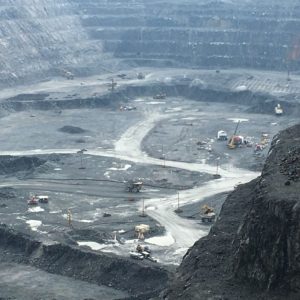
Figure 5: machines on the surface
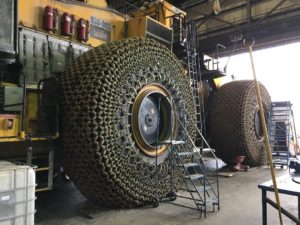
Figure 6: massive machines
There was slowness on August 12th as a group of us sat down at the SenseLab to brainstorm a response to the presentation made by Bernard Foing who spoke to us about prospective human habitats on the moon. We sat amongst moments of silence, as some of us recalled Sarah Sharma’s August 10th talk “In the meantime, no exit”. There shall be no exit! we said. Instead, there shall be a very slow queer party in upward mobility, that shall perhaps never arrive. The sensibilities of resistance was strong with this community and at the buzz of Day 12, there was little hesitation. It was okay, we thought to not arrive on the moon. We were of the earth and this is where we want to be. This is where life is community.
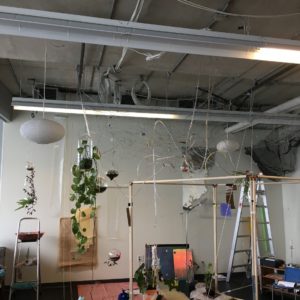
Figure 7: The SenseLab
In the spirit of the queer planetary futures we shall all perhaps one day occupy, there was karaoke that evening at Notre Dame Des Quilles where we sang over wooden bowling lanes as our moving bodies occasionally spilled the beers we tipped an extra dollar for. There was slowness in this celebration too, because it was all to come to an end soon and there shall be taxis to airports to be paid for.
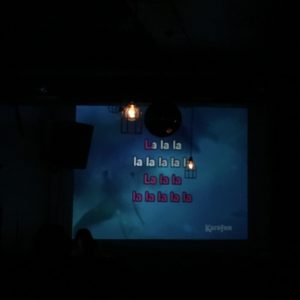
Figure 8: to sing along
There was solidarity in the making. I remember on the 8th of August, a member of the community took us for a short walk in Kahnawake Territory near Montreal. The word Kahnawake meant ‘by the rapids’ and the members of the Kahnawake were the caretakers of these waters and spaces. At a time where across Canada in many other indigenous lands, the struggle against extraction and colonisation continues as ever, the site was a moment of reflection of how violences have changed the course of history and has redrawn relationships. Speculation is not even aesthetically separate from this history, just as extraction is not separate from colonisation.
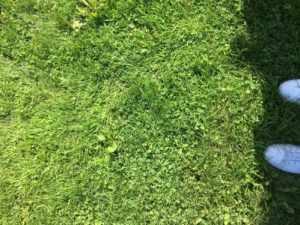
Figure 9: standing on land and life
Solidarity is often found through moments of kindness. Like the bus driver running a private service who sympathetically picked us up at Habitat 67 (currently private housing, originally designed by Moshe Safdie as part of the Expo 67 campus) as we struggled to find a mode of public transport to take us back to the centre. “The bus is only full during peak hours” he said, as people go to work and come back home. A certain kindness and informality managed the flow of the school. This humanness of the school somehow enabled a bizarre openness, where across political disciplines, the community chatted through ways of knowing, ways of being. It was anchored in the task of the future – where the present was the only way to be with. It was about the politics of the present but meanwhile, in the gaps between the present and the future, there shall be speculation, often through fiction but where life shall always take precedence.
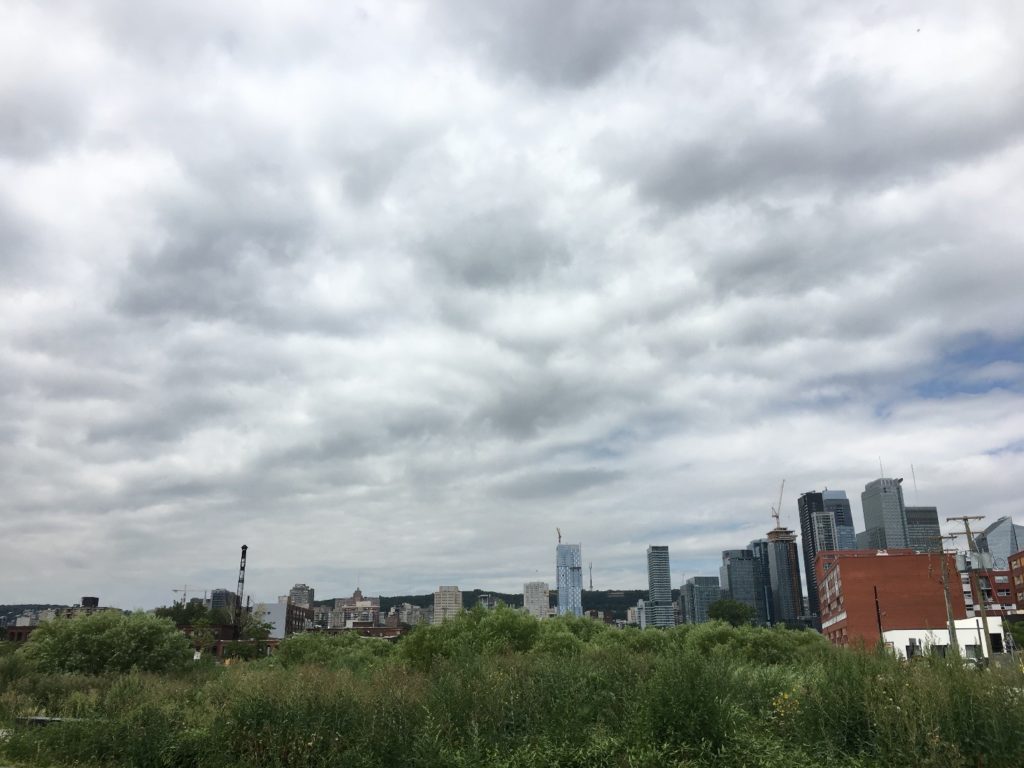
Figure 10: Montreal
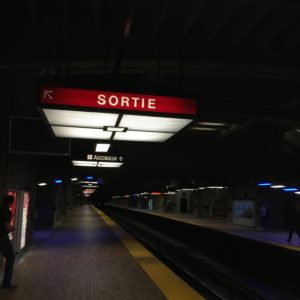
Figure 11: Montreal Metro
For more information about the school, please visit http://www.speculativelife.com/event/planetary-futures-summer-school/. Try and catch traces of our activity with the hashtag #planetaryfutures on Instagram and other social media.
Call for Papers
Deadline: 08 January 2018
Symposium Dates: 12-13 April 2018
Venue: University of Westminster, London, UK
THIS CALL IS NOW CLOSED
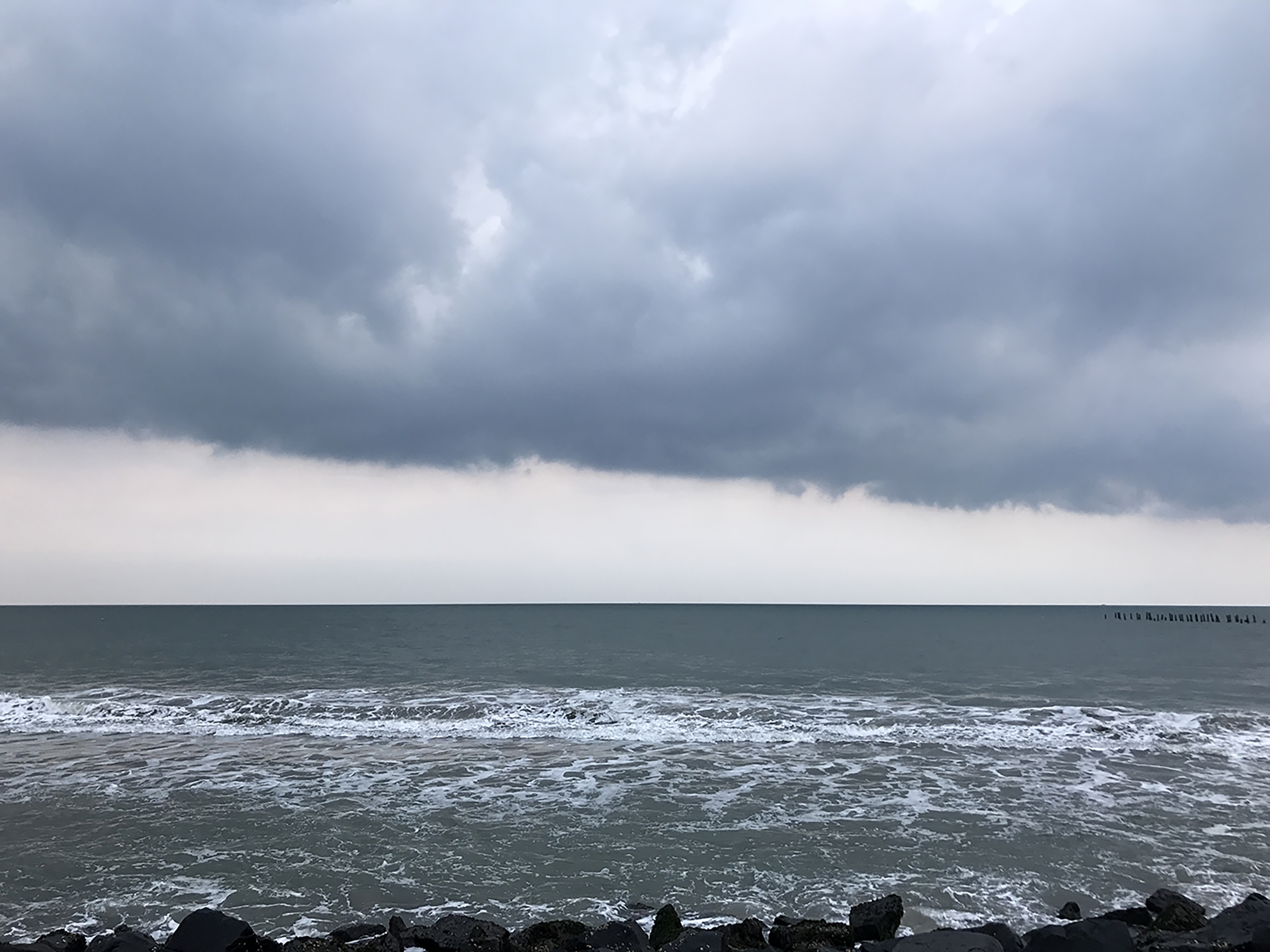
Proposals for papers are invited for Monsoon Waters, the second in a series of symposia convened by Monsoon Assemblages, a research project funded by the European Research Council (ERC) under the European Union’s Horizon 2020 research and innovation programme.
We live in a world where political geography and spatial planning have assumed permanent and easily observable divides between land, sea and air. Land is understood as solid, stable, divisible and the basis of human habitation; the sea is understood as liquid, mobile, indivisible, and hostile to human settlement; air is understood as gaseous, mobile, invisible and indispensable to human life. The monsoon cuts across these divisions. It inundates lived environments every year, connecting land with sea and sky. It is a spatial practice that reorganises air, water, land, settlements, cities, buildings and bodies through heat, wind, rain, inundation, saturation and flow. It unites science with politics and policy with affect. Today climate change is disrupting its cycles and explosive social and economic growth and rapid urbanisation are increasing the uncertainty of its effects. How can spatial design and the environmental humanities respond to these conditions by drawing on the monsoon as a template for spatial theory, analysis and design practice?
In order to deepen its responses to these questions Monsoon Assemblages is convening three symposia between 2017 and 2019 framed by the states of matter connected by the monsoon – air, water and ground. Monsoon [+ other] Airs took place in April 2017. The second symposium, Monsoon Waters will take place on 12-13 April 2018. It will comprise inter-disciplinary panels, key-note addresses and an exhibition and aims to bring together established and young scholars and practitioners from a range of disciplines, literatures, knowledge systems and practices (theoretical, empirical, political, aesthetic, everyday) to engage in conversations about the ontologies, epistemologies, histories, politics and practices of monsoon waters. We are particularly interested in contributions that investigate
Wet monsoon ontologies
Following Mathur and da Cunha [1] we are interested in contributions that explore wetness (in the air, on the earth, under the earth) as a way of being, cultures of wetness, and the urban, environmental and political consequences of attitudes towards being wet.
Late-modern monsoon waters
We are interested in contributions that explore attitudes towards water in south Asia since the mid 1980’s, their history, their urban, environmental and political consequences and the ways-of-being-monsoon-water that these attitudes have produced, such as flood-water, deficient-water, toxic-water, beautified-water, bottled-water etc.
Monsoon waters in a changing climate
We are interested in contributions that explore monsoonal cycles of wetness and dryness from the perspective of climate change, any changes in political, social or economic behaviour these might be catalysing and in new or invigorated social movements these changes might be inspiring.
Visualising monsoon waters
We are interested in contributions that explore ways of visualising monsoon cycles of wetness and dryness, (in the air, on the earth, under the earth) and their consequences for spatial design practice.
Confirmed key note speakers at the symposium are:
Anuradha Mathur Dilip da Cunha: architects, planners and landscape architects based in Philadelphia, USA and Bangalore, India, whose work is focused on how water is conceptualised and visualised in ways that lead to conditions of its excess and scarcity, and the opportunities that its ubiquity offers for new visualizations of terrain, and resilience through design.
Kirsten Blinkenberg Hastrup: environmental anthropologist based in Copenhagen, Denmark, whose work deals with social responses to climate change across the globe, currently centered in the Thule Area, NW Greenland.
Contributions are invited in response to these provocations. They should take the form of 150 – 250 word abstracts for either papers or creative, practice based contributions such as drawings, photographs, videos, performances, musical compositions etc. Enquiries or abstracts should be sent to Lindsay Bremner at l.bremner@westminster.ac.uk by 08 January 2018. Abstracts will be reviewed by the Monsoon Assemblages team and authors will be notified by 29 January 2018 whether their contributions have been accepted or not. There is no registration fee for the symposium, but participants will be required to secure their own funding to attend it. Participants will be requested to submit their contributions for publication in the symposium proceedings, or, potentially, a special journal issue.
Monsoon Assemblages is a research project funded by the European Research Council (ERC) under the European Union’s Horizon 2020 research and innovation programme (Grant Agreement No. 679873).
[1] Anuradha Mathur and Dilip da Cunha. (2017). Wetness Everywhere https://vimeo.com/228719234
After a visit to Chennai with the MONASS team, I spent some weeks this summer exploring other parts of Tamil Nadu.
Tamil Nadu was created out of part of the former Madras State when the administration of India was divided based on language in 1950, three years after independence. Though Chennai is the capital, it sits in the far north of the state near the border with Andra Pradesh. The state extends south, encompassing over one thousand kilometres of Coromandel coastline to its terminus at Kanyakumari—the southern tip of the Indian peninsula—as well as widening westward towards the Nilgiri hills and the Western Ghats, which form the border region with the narrower coastal state of Kerala. It has been interesting to notice during our research on the Bay of Bengal that this asymmetric state divide follows quite closely the watershed divide: only a narrow strip of the peninsula drains west to the Arabian Sea; a much larger area drains east to the Bay of Bengal.[1]
Our journey took in some of the coastline to the immediate south of Chennai as well as a crossing of the peninsula by train to the Nilgiris, then on to Mysore and Bengaluru in Karnataka:
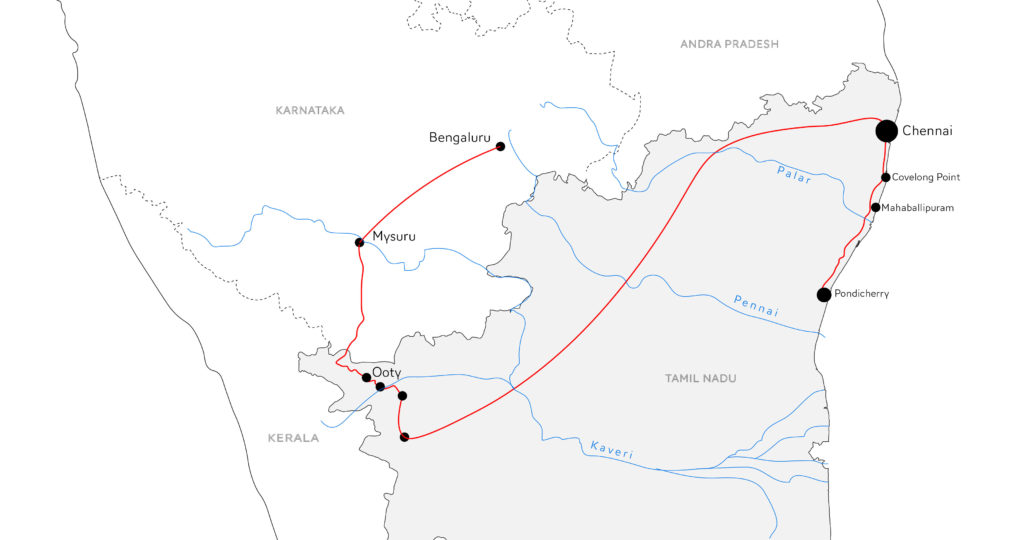
The journey south from Chennai crosses a number of wetlands and river deltas, though not all carry much water. I had been anticipating crossing the Palar—apparently the largest river delta in the region and the defining hydrological feature northern Tamil Nadu—and so I was surprised by the dry, scrubby landscape that we passed over. This was August, and though the Monsoon had moved from its first landfall in Kerala, and on to the North East (Bihar) where there was now significant flooding, these river systems sit in the rain shadow of the Western Ghats, and only really flow after heavy rains during the north-eastern retreating monsoon in November / December, as in 2015.[2] Interstate dams upstream, contamination from tanneries and other industry, sand mining, and over-extraction of groundwater, all contribute to the state of the river in this place.[3]
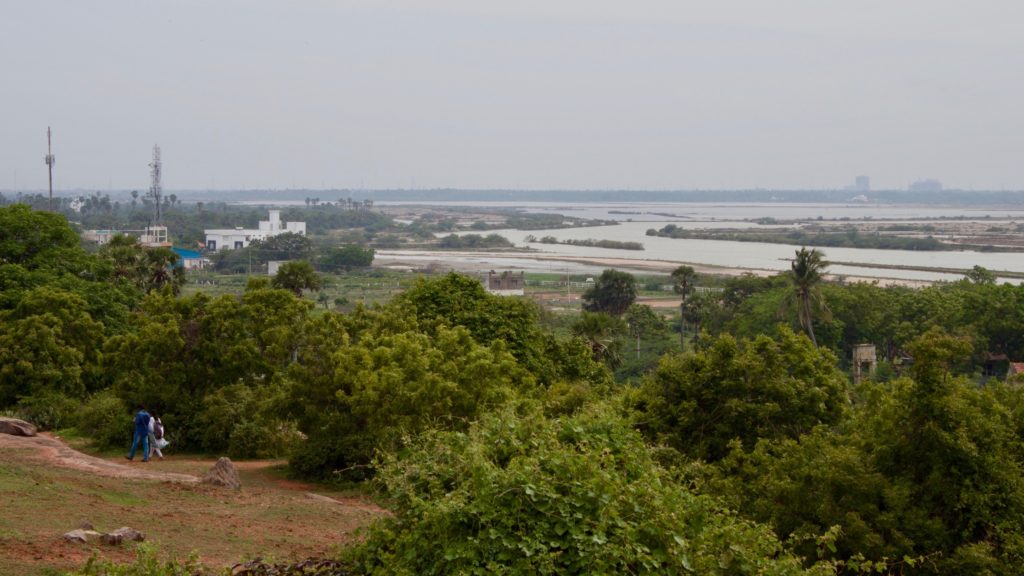
Much of the land was wet, though, and on the journey south we passed many salt pans and marsh systems. At Mahabalipuram, (Mamallapuram), it was possible to stand on the granite outcrop and look out across a landscape of lakes and ponds, salt pans and estuaries, and people working on them. And where we were standing, strikingly orthogonal tanks had been carved into the rock for water storage at high level, with remnants of an intricate network of shallow channels to direct the outflow. These channels include the giant cleft in the rock of Arjuna’s Penance / Descent of the Ganges—a massive seventh-century carving with the river (both literal and symbolic) at its centre.
As we travelled, it seemed to be getting hotter, and in Puducherry (Pondicherry) it was 5pm before we could stand to sit out on the beachfront, with many others, on the well-known rocky breakwater, wet and salty from sea spray (and crawling with crabs) but wonderfully serene. The sea wall had been erected to halt rapid coastal erosion, to assertively draw a barrier between sea and land. As the British writer William Chambers put it in 1788, the Bay of Bengal is always ready to ‘overflow its boundaries’ and reclaim land—the ‘formidable enemy’ of the sea.
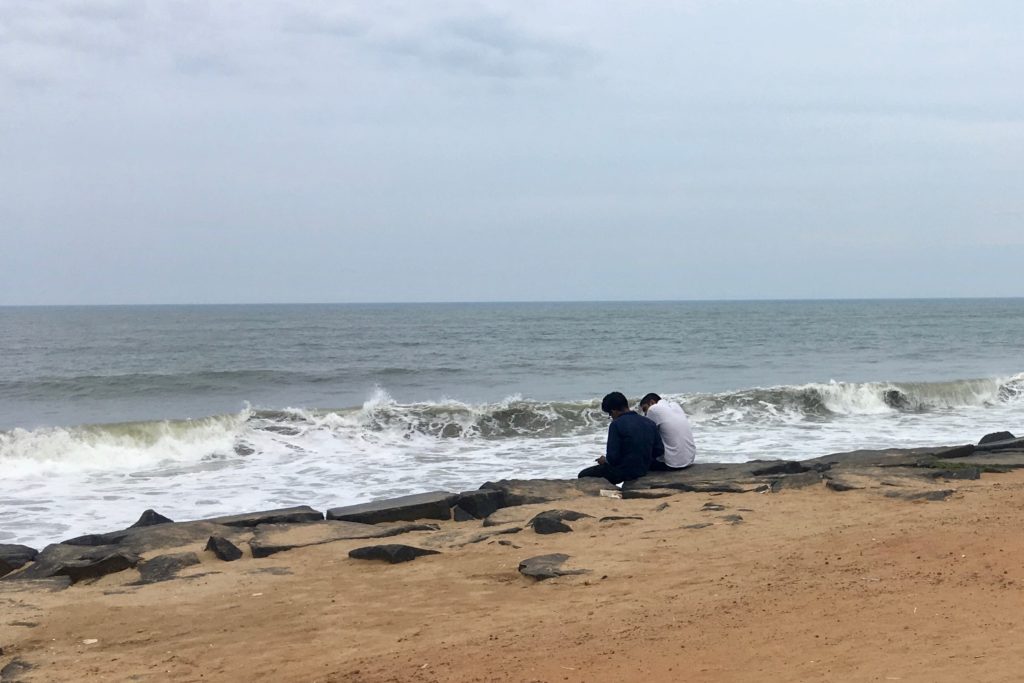
Pondicherry is separate from Tamil Nadu state, being a former French colony only fully incorporated into India in the 1960s as a union territory. Aside from the more apparent attractions of alcohol tourism (given Tamil Nadu’s strict licencing laws), and the much-touted cafes, restaurants, and architecture redolent of its distinct colonial past, the modern city gave a strong impression of multicultural South India. Each evening, a sudden transformation took place in the street below our guesthouse, as piles of straw laid out an improvised cattle market—goats being sold, presumably in advance of Eid al-Fitr the following week.
On my next visits, I will hope to again be able to take some time away from Chennai and explore more of the coast, and in particular the surf schools at Serenity Beach, Mahabalipuram, and Covelong Point. Many of these businesses, younger than their West-coast cousins, see themselves as social pioneers: providing opportunities for young people, and promoting stewardship of the beach and ocean. For now, as we travelled back towards Chennai, we stopped at the Covelong Point surf festival, now in its fifth year and expanding rapidly with corporate backing.
As we arrived back to Chennai Central for our night train to the West, we encountered our third storm of the trip, and the noise from the rains on the thin metal platform canopies combined with the spray from the tracks to smother the waiting passengers as train pulled in. I later saw images of the concurrent flooding in Mumbai—cascades of water moving through the central station—and thought our ordeal very insignificant, but at the time I was happy to safely board and be on our way on time.
The hill stations of Coonoor and Ooty in the Nilgiri hills—reached by metre-gauge steam train—were another surprise, a kind of hybrid of British upland, Alpine town, and Indian marketplace. Mossy ground, wet rock, ferns, lakes, horses, fields of carrots and beetroot, damp skies, frequent showers. The typically vibrant Indian colour palette made way for a resentful return to blacks, browns, and greys—imported woollen and acrylic jumpers, scarves, and hats a generation or two out of sync, which reminded me of old department stores, and grandparents’ cupboards. The style of dress made it feel colder in Ooty than it was, though the rapidly decreasing temperature on the ascent to 2240m had already been felt.
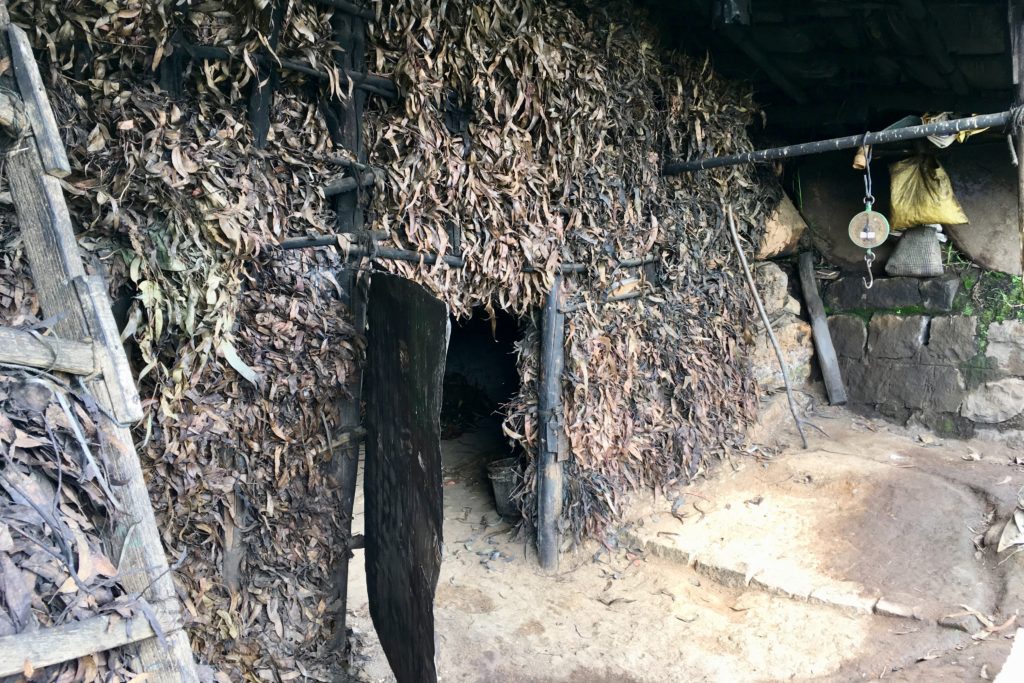
Exploring by walking, which normally makes you feel embedded in places away from cities, in India makes you feel a complete outsider, since walking as leisure has such a narrow appeal. But we were invited to see the processing of Eucalyptus oil, in a barn seemingly built entirely of the burnt leaves of that tree. And—as Hemmingway wrote of another place—we learned the contours better for having had to sweat up them.
Sleeping under blankets had felt very odd, though, and I was happy to descend towards Mysore and Bangalore in Karnataka. Bangalore was a return to dramatic urban infrastructure of flyovers and metro systems, but also has one of the most remarkable urban parks I have visited. Visited the morning after a night’s rain, the ground of Cubbon Park was spongy and wet, its massive bamboos and rocky outcrops both emerging from an uneven and apparently unstable landscape, in complete contrast to the seemingly more famous botanical gardens in the South of the city.
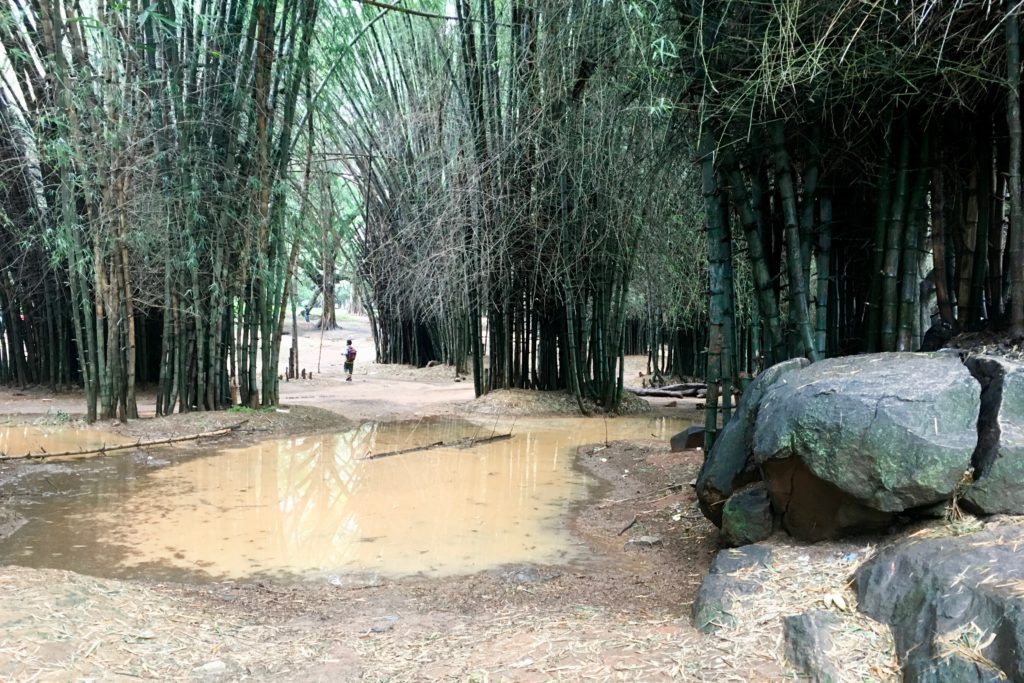
[1] Watershed Atlas of India
[2] http://www.thehindu.com/news/national/tamil-nadu/water-flows-into-palar-after-almost-a-decade/article7868057.ece
[3] RR Srinivasan Ramamoorthy. 2008. My Name is Palaru [film]